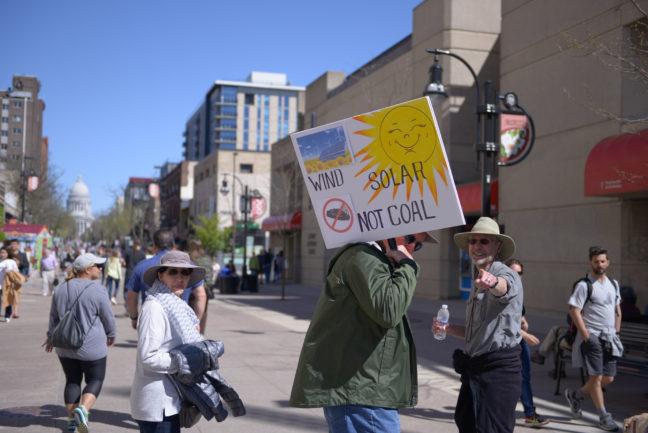For the second year in a row, University of Wisconsin students were welcomed back to campus with flash flooding. Granted, for Madison, flooding may seem like a natural evil due to the city’s unfortunate placement between two lakes. But when one zooms out of their map and takes a look at the greater picture — mainly, the whole of southern Wisconsin — the story our weather tells is enough to make anyone nervous.
At the same time Madison battened down the hatches and prepared for the recent floods, our neighboring counties to the west — Adams, Juneau, Richland, Crawford and Grant counties, specifically — were under a tornado watch. Fortunately, no tornado reared its ugly face. But sadly, this large amalgam of severe weather may be indicative of a greater trend.
Although precipitation does vary across the state, with south-central Wisconsin facing generally wetter conditions than our northern counterparts, the Wisconsin Initiative on Climate Change Impacts reported a 15% increase in precipitation from 1950 through 2006. Annual precipitation in south-central and western Wisconsin increased as much as seven inches.
Temperature-wise, Wisconsin has gotten considerably warmer in the past 60 years. The WICCI’s work suggests Wisconsin’s warming trend will not only continue but also increase considerably in the near future. By the middle of the current century, WICCI predicts statewide annual average temperatures are likely to warm by six to seven degrees Fahrenheit.
Long story short, Wisconsin’s climate is changing rapidly, bringing dangerous and destructive effects to natural habitats, agriculture, water resources and public health. Climate change is everywhere — both natural and built environments are subject to its influence.
Before this column progresses any further, let me be perfectly frank: I refuse to argue that these environmental changes have no anthropogenic sources. Most of the world’s leading scientific institutions have released public statements affirming the position that the climate changes in the last century are extremely likely due to human behavior. Multiple peer-reviewed studies show 97% of the world’s scientists have come to this consensus. Arguing anything else is fruitless and drags us backward.
Letter to the Editor: Unprecedented weather calls for innovative solutions
The center of the conversation should not be about if the problem exists — it should be about solutions.
Climate change, including the increase in average global temperature, is caused by the emission of greenhouse gases, particularly carbon dioxide, into the atmosphere. These gases trap heat inside Earth’s atmosphere, raising the global temperature. Unfortunately, Wisconsin’s dependence on fossil fuels is partly to blame.
As of 2018, Wisconsin generates 49% of its electricity from burning coal and 26% from natural gas, according to the U.S. Energy Information Administration. Sadly, only 9% of Wisconsin’s utility-scale net electricity generation came from renewable resources such as wind, biomass, hydroelectric and solar power. These energy sources are the most environmentally friendly, yet they are criminally underutilized.
Last month, Gov. Tony Evers signed an executive order which aims to wipe out the use of carbon-based fuel in Wisconsin by 2050. The order also established the Office of Sustainability and Clean Energy in the state Department of Administration, which will lead the effort toward Wisconsin’s dependence on 100% renewable energy. The office will also be responsible for creating new energy efficiency and renewable energy standards for state buildings, developing coordinated efforts among state agencies to mitigate the effects of climate change and make sure Wisconsin fulfills the carbon reduction goals set by the Paris Climate Accord.
Madison closer to reaching 100% renewable energy goal as program installs solar panels
Evers’ fight for renewable energy has been thwarted at every level of government. He originally proposed the carbon-free goal and new state agency in his last budget proposal, but the Republican legislature removed the language before passing the spending agreement. When the U.S. wanted to join nearly every nation in the world in the fight against global climate change by joining the Paris climate change agreement, President Donald Trump withdrew the U.S. from the agreement.
In a country led by an administration that appoints a former coal lobbyist as the administrator of the Environmental Protection Agency, the onus seems to fall on the states to make comprehensive changes meant to combat climate change. Though Wisconsin’s Republican legislature makes it difficult, Evers’ recent executive order is a monumental step in the right direction. The journey to a green future will be long and difficult — weighing the fate of the global climate with the success of industry, economic prosperity and world-wide diplomacy efforts is easier said than done. But without Evers’ incredible first step, it is a journey Wisconsin, and to an extent, the U.S., would never get to partake in.
Abigail Steinberg ([email protected]) is a junior majoring in political science and journalism.




















